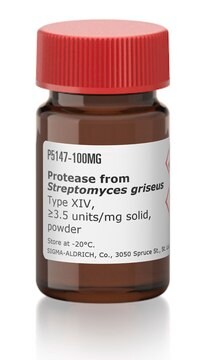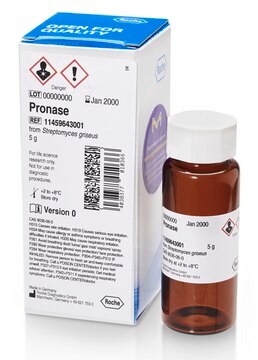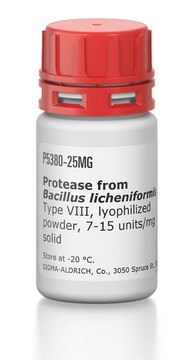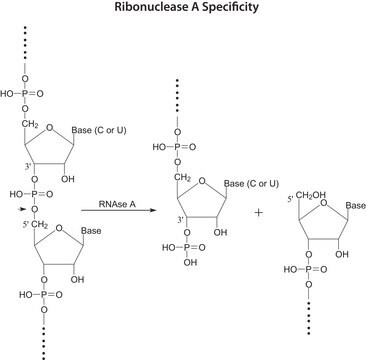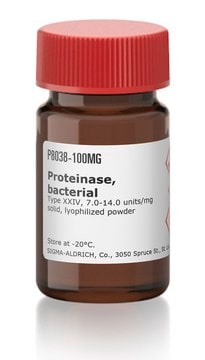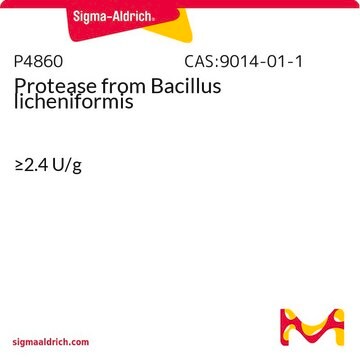P6911
Proteasa from Streptomyces griseus
BioReagent, DNase, RNase, and nickase, none detected (No RNase.)
Sinónimos:
Actinasa E, Pronasa E
About This Item
Productos recomendados
grade
for molecular biology
Quality Level
product line
BioReagent
form
powder
mol wt
monomer ~20 kDa
concentration
≥4 unit/mg
solubility
water: 5-20 mg/mL
foreign activity
DNase, RNase, and nickase, none detected (No RNase.)
storage temp.
−20°C
¿Está buscando productos similares? Visita Guía de comparación de productos
General description
Specificity
Application
- Nucleic acid isolation procedures in incubations
- Degrade protein during nucleic acid purification
- Proteolysis of insoluble protein
- Structural protein studies
Physical properties
Unit Definition
Preparation Note
Analysis Note
Other Notes
Related product
signalword
Danger
hcodes
Hazard Classifications
Eye Irrit. 2 - Resp. Sens. 1 - Skin Irrit. 2 - STOT SE 3
target_organs
Respiratory system
Storage Class
11 - Combustible Solids
wgk_germany
WGK 2
flash_point_f
Not applicable
flash_point_c
Not applicable
ppe
Eyeshields, Gloves, type N95 (US)
Certificados de análisis (COA)
Busque Certificados de análisis (COA) introduciendo el número de lote del producto. Los números de lote se encuentran en la etiqueta del producto después de las palabras «Lot» o «Batch»
¿Ya tiene este producto?
Encuentre la documentación para los productos que ha comprado recientemente en la Biblioteca de documentos.
Los clientes también vieron
Nuestro equipo de científicos tiene experiencia en todas las áreas de investigación: Ciencias de la vida, Ciencia de los materiales, Síntesis química, Cromatografía, Analítica y muchas otras.
Póngase en contacto con el Servicio técnico